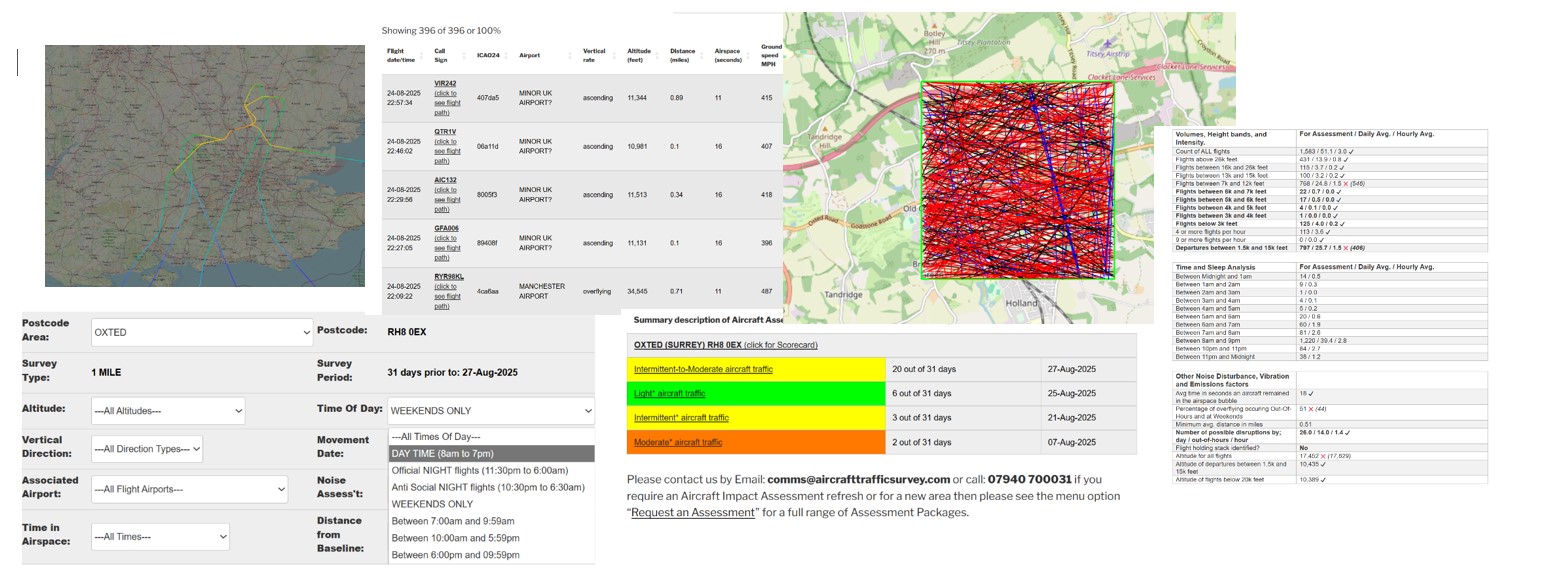Why is our Aircraft Assessment required? The aviation industry, the local authorities and the associated government bodies are not legally required to report and share aircraft movements by postcode, so they don’t. Meaning we buy and rent our homes and also visit our open spaces without any understanding of potential noise and emissions created by the aircraft being routed overhead. Buying and renting are expensive in terms of emotional and financial costs so try and avoid getting trapped into a situation you had not expected.
Is it all about the decibels? We think not as the aircraft cruising noise, excluding maneuvers, tends to be around 45-55 dBs, which is about the same as a car. However, the noise duration is typically 30-50 seconds i.e. it’s not a single short term event, and this is what can causes an annoyance. Additionally, the noise created at 1,000 feet and above is not readily absorbed by trees and buildings and can merge with noise coming from other nearby aircraft. This in turn creates a continuous low level background rumble.
What emissions? Whenever you hear aircraft noise there are very likely to be emissions too. By having an understanding of aircraft movement and how long it takes for an aircraft to cross the postcode’s airspace it is then possible to calculate the scale of the emissions. Emissions such as; Carbon Dioxide, Carbon Monoxide, Nitrogen Oxide and Particulate Matter such as soot. It’s estimated that an aircraft emits 250kg of Carbon Dioxide per hour. Meaning, 2 planes navigating the same postcode at the same time for 20 seconds will emit; 2.78kg of Carbon Dioxide, 14.30 milligrams of Nitrogen Oxide and 1.84 milligrams of Particulate Matter.
Our focus is on identifying the potential causes of continuous noise disturbances and emissions at the times when we are at our most sensitive e.g. early morning, late at night and at weekends.
The Assessment processes billions of “research quality” data points and is a fusion of multi-million £s of IT investment overlaid by real life experiences. We can also supply the detailed evidence for each Assessment.
The Assessment is designed to highlight locations for; buyers, sellers, renters, holidaymakers, and property investors where there is a high likelihood of experiencing aircraft noise and emissions.
We also include articles that describe some of the causes and patterns that can result in aircraft pass-bys such as; flight paths, flight corridors, flight routes and flight holding stacks.
